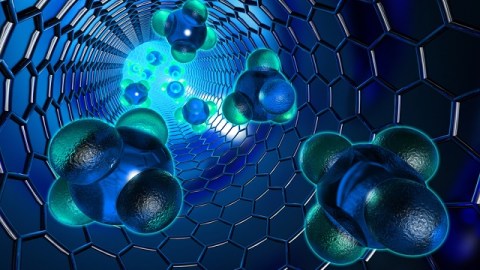Using Nanoparticles To Help Heal Microfractures In Bones

What’s the Latest Development?
Chemists and bioengineers at Boston University and Penn State have figured out how to heal microfractures in bones through a special targeted method: Drug molecules are attached to the “backs” of negatively-charged nanoparticles, which are then drawn to the bone by the ions produced by the fractures themselves. Because the “nanomotors” are self-powered, so to speak, they deliver drugs much more effectively than current methods, in which the medication passively rides the bloodstream and may not reach the fractures in sufficient quantities to begin the healing process.
What’s the Big Idea?
Because the broken bones that result from conditions such as osteoporosis begin as very tiny cracks, finding and healing those cracks ahead of time is very important. The team first tested synthetic materials in the lab, using fluorescence to make them easier to see, before graduating to biological materials — the common drug sodium alendronate, also known as Fosamax — and testing on live human bone cells. The team still has a long way to go before the delivery method will be ready for patients. Details of their research was published last month in an online edition of Angewandte Chemie.
Photo Credit: Shutterstock.com




